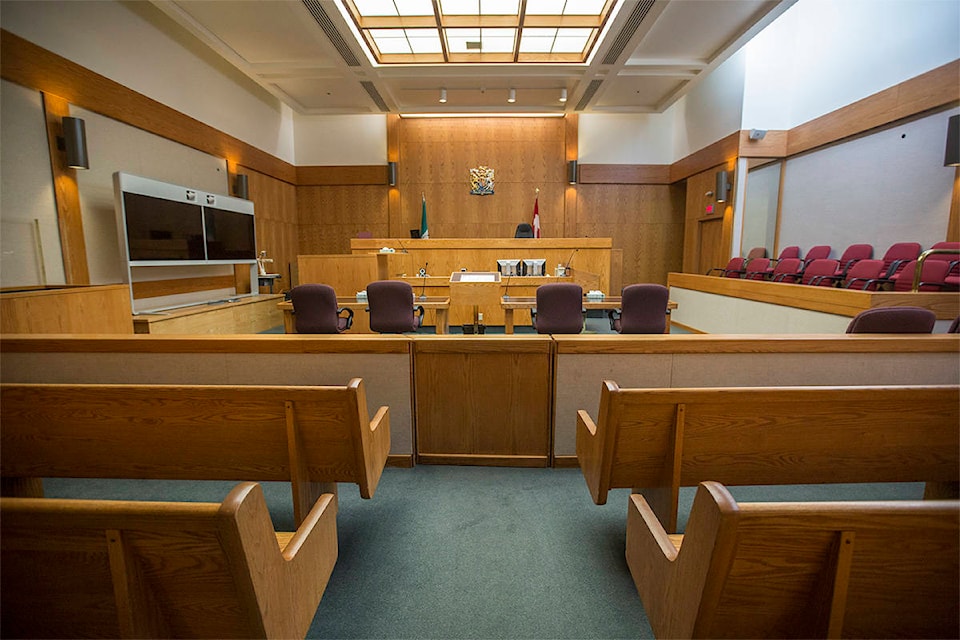Adam Cormack was killed by a single shot to the head — an act that was deliberate and planned, the Crown told a Whitehorse jury Aug. 28 during its opening statement in the trial of the man accused of pulling the trigger.
Edward James Penner, 22, stands charged with first-degree murder in relation to Cormack’s 2017 death.
He has pleaded not guilty.
Cormack’s body was discovered on a dirt road near a gravel pit off Kilometre 1450 of the Alaska Highway in Ibex Valley on June 28, 2017. He was 25.
The Crown intends to prove that Penner shot Cormack, Crown attorney Amy Porteous told a 14-member jury the afternoon of Aug. 28.
Only two people directly witnessed what happened Porteous said — the shooter, and Cormack. However, the jury will hear relevant evidence from a number of other people, each of them providing puzzle pieces that will eventually create a full picture of what transpired.
“Try not to rush to any conclusions during the trial … It’s not a movie, the witnesses don’t have scripts to follow,” she cautioned.
While she said she couldn’t say for sure what would happen, Porteous said she expects the jury to hear that Penner came to Whitehorse in the late summer of 2017, and, like Cormack, was involved in the drug trade.
The jury can expect to hear that Penner was in search of a missing gun, Porteous continued, which is how he came into contact with Cormack. The jury will hear that Penner, Cormack and a third man left a party together in a car one night, driving to a gravel pit, used as an informal shooting range, to test out a gun.
Porteous said she expects the jury will hear that Penner and Cormack got out of the car and walked towards the pit, and that the third man, who was waiting in the vehicle, heard a single shot before Penner came back, alone.
“You’re a fucking piece of shit!” a woman in the gallery, who had been audibly sobbing throughout the opening statement, yelled out at Penner after Porteous described the path the bullet had taken. She was seated next to a woman wearing a memorial shirt for Cormack.
While a shell casing from an AR-15 was found at the scene — an important detail, Porteous said, because Penner was reportedly seen carrying the same kind of gun in Whitehorse — the gun itself was never found. It’s a missing part of the puzzle, she acknowledged, but added that “this is real life,” and a missing piece doesn’t stop someone from seeing the whole picture.
The jury can expect to hear from the man who found Cormack’s body and alerted authorities, as well as two people who will allege that Penner told them about shooting Cormack, including a woman whom Penner threatened to “do the same” to, Porteous said.
The first witness the jury heard from, though, was Sgt. James Giczi, the head of the Yukon RCMP’s forensic identification unit who arrived at the scene the evening of June 28, about three hours after the 911 call.
In testimony that carried over into Aug. 29, Giczi described walking up a dirt road with his investigative partner and taking a fork that went up a hill to where Cormack’s body, which by then had been covered with a tarp by first-responders, was found.
Giczi walked the jury through the numerous photographs he and other investigators took at the scene, including aerial shots, pieces of evidence and close-ups of Cormack’s body.
Among the items Giczi documented were two Pepsi cans — an empty one, which was later found to have Penner and another man’s DNA on the opening, and a full one, which had Cormack’s finger prints on them — as well as a bullet and bullet casing.
Giczi said that while there were a number of bullets and casings in the area, he focused on a casing found about eight feet from Cormack’s head because it appeared “fairly fresh,” with no dust or water contamination. The Pepsi cans also didn’t appear weathered, although Giczi acknowledged during cross-examination that he couldn’t say for sure how long the casing or the cans had actually been there.
The jury also heard from three other witnesses on Aug. 29.
Forensic biology reporting scientist Annabella Mosimann, who works at the RCMP forensics lab in Surrey, B.C., did the DNA analysis on several pieces of evidence including the Pepsi cans as well as the bullet.
The presence of blood could not be confirmed on the bullet, she said, and, during cross-examination by lawyer Kelly Labine, also said that her lab did not find any traces of blood on a pair of sweatpants and shoes belonging to Penner.
The jury also heard from paramedic Richard Gavin, who, along with his partner, were the first emergency responders to arrive on-scene, and Whitehorse RCMP Const. Candice MacEachen, who described responding to a call about a man acting strangely in downtown Whitehorse on June 30.
The man was reported to have entered Twisted Woodworks, a Health and Social Services Building and Napa Auto Parts, acting paranoid and in a strange manner, MacEachen testified. She arrested him under the Mental Health Act, and he was taken to Whitehorse General Hospital before being arrested for mischief and taken to the arrest processing unit.
The man gave his name as “Tanner,” she said.
The Crown also played a video of a statement Cyril Golar, now deceased, gave to police in August 2017. Golar had seen Cormack’s body before the man who called 911, but said in the video that he had decided not to alert authorities because he had thought, “Let sleeping dogs lie.”
The trial is expected to last about four weeks.
Contact Jackie Hong at jackie.hong@yukon-news.com
